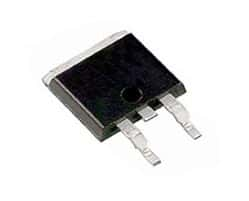The Raspberry Pi is capable of HD video. Won’t it be great if you could playback your Blu-ray movie collection through Raspberry Pi on to your HD TV or monitor? That would be possible if you knew how to let Raspberry Pi run XBMC.
What is XBMC?
XBMC is a software media player and entertainment hub, and the best part is you do not need to pay anything to get it, as XBMC is free and open source (GPL). As a media player, XBMC has almost everything you will need, right from TV and remote controls, to support for digital media files from local and network storage media including the internet. You can play and view most digital media files such as podcasts, music and videos.
There is not much that XBMC misses. You get to play all your music files in mp3, flac, wav and wma formats. You can watch movies in all the main video formats including streamable online media. You can keep track of your progress of season views and episodes of TV shows. You can import pictures into a library for browsing as in a slideshow, and you can record live TV all from the nice GUI interface that XBMC has.
Step 1: Download XBMC
You will need to download an image of XBMC, which is available as “debian-xbmc-24-04-2012.zip” and you can get it here. Unzip the file to get to the image.
Step 2: Write the Image on to an SD Card
If you are on Linux or OSX, open up a terminal and navigate to the folder containing the downloaded image. To write to an SD card, you have to enter the following command –
dd bs=1m if=debian-xbmc-24-04-2012.img of=/dev/rdisk1
Note that ‘/dev/rdisk1’ depends on the type of PC you are using.
If you are still on Windows, you need the Win32DiskImager utility program to write the image to the SD card in the device box.
Step 3: Make Space on the SD Card
The image written to the SD Card will be about 2GB, leaving about 60MB free space. This is not enough for XBMC to operate properly. Use Gparted, which is the Debian partition editor to expand the free space. Assuming you have a 16GB card on which you installed the OS and XBMC, there is still 13GB space left over. Go into Gparted, and expand the Linux swap partition to cover the 13GB. That will allow XBMC to use the free space.
Step 4: Start Action
Plug in the SD card into your Raspberry Pi, and boot it up. At the command prompt, type –
XBMC
and you should be able to see the following –
Note that XBMC is still an alpha release, and is somewhat fragile. It might lock up or not start at all. This is expected and you may need to restart Raspberry Pi over again to get XBMC play properly.
Try out all your music, video and other programs including your favorite TV shows, and you will be surprised at the quality of the output from the combination of XBMC and Raspberry Pi.

 Although powerFETs or power Field Effect
Although powerFETs or power Field Effect